Cream Cheese Cake: The Ultimate Guide to a Moist and Flavorful Dessert
Introduction
ADVERTISEMENT
Cream cheese cake, a delightful blend of richness and moisture, has captured the hearts of dessert lovers everywhere. Whether you're an experienced baker or just beginning your journey, this cake offers an indulgent experience that's hard to resist. The secret to its incredible texture lies in the cream cheese, which adds a velvety smoothness and depth of flavor that other cakes simply can't match.
This guide will walk you through everything you need to know to create the perfect cream cheese cake, from gathering your ingredients to mastering the frosting. You'll discover why this dessert is a favorite at gatherings and learn tips to ensure your cake turns out flawlessly every time. So, let's dive in and explore the world of cream cheese cakes, where every bite promises a moist and flavorful treat.
Ready to bake the ultimate Cream Cheese Cake? Let’s get started!
What You'll Need
Before you embark on your cream cheese cake journey, it’s essential to gather the right tools and ingredients. Having everything prepared and within reach will make the process smoother and more enjoyable. In this section, we'll cover the essential tools and ingredients you'll need to create a moist and flavorful cream cheese cake.
Essential Tools
To achieve the best results with your cream cheese cake, you’ll need a few key tools:
- Mixing Bowls: Multiple mixing bowls are necessary to keep your dry and wet ingredients separate until they’re ready to be combined. Opt for bowls of different sizes to accommodate the various steps in the recipe.
- Electric Mixer: An electric mixer, whether handheld or stand mixer, is crucial for achieving the smooth, creamy texture that defines a great cream cheese cake. It helps in blending the cream cheese with other ingredients evenly, ensuring a consistent batter.
- 9x13-inch Baking Dish: This size is ideal for a standard cream cheese cake, allowing for even baking and perfect portion sizes. Make sure it’s well-greased before pouring in the batter to prevent sticking.
- Sifter: A sifter is used to aerate the flour and other dry ingredients. This step ensures that your cake batter is lump-free and has a light, fluffy texture.
- Wire Rack: Cooling the cake properly is just as important as baking it. A wire rack allows air to circulate around the cake, helping it cool evenly and preventing it from becoming soggy.
Ingredients
For the best cream cheese cake, the quality of your ingredients matters. Here's a breakdown of what you'll need for both the cake and the frosting:
For the Cake:
- 8 oz cream cheese, softened: The star of the recipe, cream cheese adds richness and moisture to the cake. Ensure it’s softened before use to blend easily.
- ½ cup vegetable oil: Provides moisture and a tender crumb without overwhelming the flavor.
- 1 cup granulated sugar: Adds sweetness and helps achieve a perfect golden color during baking.
- 3 large eggs: Eggs provide structure and richness, making the cake firm yet moist.
- 1 teaspoon vanilla extract: Enhances the flavor and complements the cream cheese perfectly.
- 2 cups all-purpose flour: The foundation of the cake, flour gives it structure.
- 1 tablespoon baking powder: A leavening agent that helps the cake rise, giving it a light and fluffy texture.
- ½ teaspoon salt: Balances the sweetness and enhances the overall flavor.
- ½ cup buttermilk: Adds tanginess and moisture, contributing to the cake’s tender crumb.
For the Frosting:
- 8 oz cream cheese, softened: Softened cream cheese ensures a smooth, creamy frosting.
- ½ cup unsalted butter, softened: Butter adds richness and helps the frosting hold its shape.
- 2 cups powdered sugar: Provides the sweetness and smooth texture necessary for a perfect frosting.
- ¼ teaspoon salt: Balances the sweetness and enhances the cream cheese flavor.
Pro Tip: For the best results, always use softened cream cheese. Not sure how to soften it quickly? Here’s a quick guide on how to soften cream cheese to get it ready in no time.
With these tools and ingredients in hand, you’re well-prepared to start baking. Up next, we’ll dive into the step-by-step instructions for preparing the cake batter, ensuring your cake turns out moist and delicious.
Instructions
Creating a delicious cream cheese cake involves a few straightforward steps, from preparing the batter to frosting the cake. Follow these instructions carefully to ensure that your cake is moist, flavorful, and beautifully frosted.
Preparing the Cake Batter
- Preheat the Oven: Begin by preheating your oven to 325°F (165°C). Proper preheating ensures that your cake bakes evenly from the moment it goes into the oven.
- Grease the Baking Dish: Grease your 9x13-inch baking dish with butter or non-stick spray. This step is crucial to prevent the cake from sticking and ensures an easy release after baking.
- Beat the Cream Cheese: In a large mixing bowl, beat 8 oz of softened cream cheese with an electric mixer until it is smooth and free of lumps. This step is key to achieving the rich, creamy texture that makes cream cheese cake so delicious.
- Add Vegetable Oil and Sugar: Gradually mix in ½ cup of vegetable oil and 1 cup of granulated sugar. Continue beating until the mixture is well combined and has a smooth consistency.
- Incorporate the Eggs and Vanilla: Add the eggs one at a time, beating well after each addition. This method ensures that the eggs are fully integrated into the batter, contributing to a smooth and consistent texture. Finally, mix in 1 teaspoon of vanilla extract to enhance the flavor.
Combining Dry and Wet Ingredients
- Sift Dry Ingredients: In a separate bowl, sift together 2 cups of all-purpose flour, 1 tablespoon of baking powder, and ½ teaspoon of salt. Sifting aerates the flour and helps distribute the baking powder and salt evenly throughout the mixture, which is essential for a light and fluffy cake.
- Mix Dry and Wet Ingredients: Gradually add the dry ingredients to the wet mixture, mixing just until combined. Overmixing can result in a dense cake, so it's important to stop mixing as soon as the batter comes together.
- Fold in the Buttermilk: Gently fold in ½ cup of buttermilk using a spatula. Buttermilk adds moisture and a slight tang, contributing to the cake’s tender crumb. The batter should be smooth and thick, with no lumps.
Baking the Cake
- Pour the Batter: Pour the batter into the greased 9x13-inch baking dish, spreading it evenly with a spatula to ensure the cake bakes uniformly.
- Bake: Place the dish in the preheated oven and bake for 35-40 minutes. The baking time can vary depending on your oven, so it’s important to keep an eye on the cake.
- Toothpick Test: To check if the cake is done, insert a toothpick into the center of the cake. If it comes out clean or with a few crumbs, the cake is ready. If it comes out with wet batter, bake for a few more minutes and test again.
- Cool on a Wire Rack: Once baked, remove the cake from the oven and let it cool in the dish for 10 minutes. Then, transfer the cake to a wire rack to cool completely. Cooling the cake on a wire rack prevents it from becoming soggy and ensures that it cools evenly.
Making the Cream Cheese Frosting
A cream cheese cake wouldn’t be complete without its signature frosting. This rich, creamy topping adds the perfect finish to your cake, enhancing its flavor and adding a delightful texture contrast. Follow these steps to create a smooth and delicious cream cheese frosting.
Preparing the Cream Cheese Frosting
- Beat the Cream Cheese and Butter: In a large mixing bowl, combine 8 oz of softened cream cheese and ½ cup of softened unsalted butter. Use an electric mixer to beat them together until the mixture is smooth and creamy. It’s important that both the cream cheese and butter are fully softened to achieve the ideal texture.
- Gradually Add Powdered Sugar: Slowly add 2 cups of powdered sugar to the cream cheese mixture, about ½ cup at a time. Continue beating on low speed until the sugar is fully incorporated, then increase the speed to medium-high and beat until the frosting is light and fluffy. Adding the sugar gradually helps prevent lumps and ensures a smooth consistency.
- Add Salt and Adjust Consistency: Mix in ¼ teaspoon of salt to balance the sweetness of the frosting. If the frosting is too thick, you can thin it out with a tablespoon or two of milk or heavy cream until you reach your desired consistency. Conversely, if the frosting is too thin, add a bit more powdered sugar.
Frosting and Serving
- Frost the Cooled Cake: Once your cake has completely cooled on the wire rack, it’s time to frost it. Use a spatula to spread the cream cheese frosting evenly over the top of the cake. If you prefer, you can also frost the sides for a more finished look, though this is optional for a sheet cake.
- Chill Before Serving: For best results, refrigerate the frosted cake for at least 30 minutes before serving. This allows the frosting to set and makes it easier to cut clean slices.
- Serve and Enjoy: When you’re ready to serve, cut the cake into squares or slices, and enjoy! This cake pairs wonderfully with fresh berries, a dusting of powdered sugar, or even a drizzle of caramel sauce for an extra touch of indulgence.
Pro Tip: Storage and Shelf Life
If you’re not serving the cake right away, it can be stored in an airtight container in the refrigerator for up to 5 days. The frosting helps keep the cake moist, so it will still taste fresh and delicious. Additionally, the cake can be frozen for up to 3 months. To freeze, wrap the cake tightly in plastic wrap and then in aluminum foil before placing it in the freezer. Thaw the cake in the refrigerator overnight before serving.
Nutrition Information
Understanding the nutritional content of your cream cheese cake is essential, especially for those who are mindful of their dietary intake. Below is a detailed breakdown of the nutrition information per serving, which can help you enjoy this dessert while keeping track of your nutritional goals.
Nutritional Breakdown Per Serving
- Serving Size: 1 slice (1/12 of the cake)
- Calories: 320 kcal
- Total Fat: 20g
- Saturated Fat: 10g
- Trans Fat: 0g
- Cholesterol: 85mg
- Sodium: 300mg
- Total Carbohydrates: 33g
- Dietary Fiber: 1g
- Sugars: 22g
- Protein: 4g
- Vitamin A: 10% of the Daily Value (DV)
- Calcium: 6% of the DV
- Iron: 4% of the DV
Understanding the Nutritional Content
- Calories: At 320 calories per serving, this cream cheese cake is a rich and indulgent treat. The majority of the calories come from fats and sugars, typical in cakes and frostings.
- Fats: The cake contains 20g of total fat, with 10g being saturated fats. Saturated fats are primarily derived from the cream cheese and butter used in both the cake and frosting. While these fats contribute to the cake's rich texture, they should be consumed in moderation as part of a balanced diet.
- Carbohydrates and Sugars: Each serving provides 33g of carbohydrates, with 22g coming from sugars. These sugars contribute to the sweetness and moistness of the cake but are something to be mindful of if you're watching your sugar intake.
- Protein: With 4g of protein per serving, this cake offers a small but notable amount of protein, mainly from the eggs and cream cheese.
- Vitamins and Minerals: The cake offers 10% of the daily recommended value of Vitamin A and 6% of calcium, primarily due to the dairy ingredients. While not a significant source of vitamins or minerals, these values contribute to your overall nutrient intake.
Portion Control and Enjoyment
While this cream cheese cake is undeniably delicious, portion control is key to enjoying it as part of a balanced diet. A standard slice, as outlined here, provides a satisfying taste without overindulging. Pairing the cake with fresh fruit or enjoying it as part of a larger meal can help balance its richness.
Serving and Storage
Serving and storing your cream cheese cake properly ensures that it remains fresh and flavorful, whether you're enjoying it right away or saving it for later. This section provides tips on how to serve your cake for the best experience and how to store it to maintain its quality.
Serving Suggestions
- Best Served Chilled or at Room Temperature: Cream cheese cake is versatile and can be served either chilled or at room temperature. Chilling the cake before serving helps set the frosting and gives the cake a slightly firmer texture. If you prefer a softer, more melt-in-your-mouth experience, let the cake sit at room temperature for about 15-20 minutes before serving.
- Pair with Fresh Berries: Fresh berries such as strawberries, raspberries, or blueberries make an excellent accompaniment to cream cheese cake. The tartness of the berries complements the richness of the cake, providing a refreshing contrast in flavors.
- Dust with Powdered Sugar: For a simple yet elegant touch, lightly dust the top of the cake with powdered sugar just before serving. This adds a delicate sweetness and a beautiful visual appeal to the cake.
- Drizzle with Caramel or Chocolate Sauce: If you want to take the indulgence up a notch, drizzle your cream cheese cake with caramel or chocolate sauce. This addition can make the dessert even more decadent and is sure to impress your guests.
Storage Tips
- Refrigeration: After serving, any leftover cream cheese cake should be stored in an airtight container in the refrigerator. The cake will stay fresh for up to 5 days when refrigerated. The cream cheese frosting helps keep the cake moist, so it will still taste delicious even after a few days.
- Freezing the Cake: If you want to save some of the cake for later, it can be frozen for up to 3 months. To freeze, first place the cake in the freezer for about an hour to firm up the frosting. Then, wrap the cake tightly in plastic wrap and a layer of aluminum foil. This double-wrapping helps prevent freezer burn and keeps the cake fresh. When you’re ready to enjoy the cake, thaw it overnight in the refrigerator.
- Serving After Storage: If you’ve stored the cake in the refrigerator or freezer, let it sit at room temperature for about 15-20 minutes before serving to allow the flavors to come through fully. This step is especially important if the cake has been frozen, as it ensures the frosting is soft and creamy.
Pro Tip: Storing Individual Slices
If you anticipate needing only a slice or two at a time, consider pre-slicing the cake before freezing. Wrap each slice individually in plastic wrap, then place them in a freezer-safe bag. This way, you can easily thaw and enjoy a slice whenever you like, without having to defrost the entire cake.
Variations
One of the joys of baking is the ability to experiment and customize recipes to suit your taste. Cream cheese cake is a versatile dessert that can be easily adapted with various flavors and ingredients to create new and exciting versions. Here are a few delicious variations you can try to put your own spin on the classic cream cheese cake.
Vanilla Cream Cheese Cake
If you’re a fan of the warm, comforting flavor of vanilla, this variation is for you. By adding a bit of vanilla bean paste, you can elevate the vanilla notes in your cream cheese cake, creating a dessert that's rich in flavor and aroma.
- What to Add: Add 1 tablespoon of vanilla bean paste to the batter in addition to the vanilla extract. The paste contains specks of vanilla seeds, which not only enhance the flavor but also give the cake a beautiful appearance.
- Flavor Profile: The vanilla bean paste deepens the vanilla flavor, making it more pronounced and luxurious. This version is perfect for those who love a simple yet richly flavored cake.
Lemon Cream Cheese Cake
For a bright, citrusy twist, try a lemon cream cheese cake. The addition of lemon zest and juice gives the cake a fresh, tangy flavor that perfectly balances the richness of the cream cheese.
- What to Add: Add the zest of one lemon and 2 tablespoons of freshly squeezed lemon juice to the batter. You can also add a teaspoon of lemon extract for an extra punch of flavor.
- Flavor Profile: The lemon adds a refreshing acidity that cuts through the sweetness and richness of the cake. This variation is ideal for spring and summer gatherings or when you want a lighter, more refreshing dessert.
Chocolate Cream Cheese Cake
Chocolate lovers rejoice! This variation combines the richness of cream cheese with the deep, indulgent flavor of cocoa. By replacing some of the flour with cocoa powder, you can create a chocolate-flavored cake that’s as decadent as it is delicious.
- What to Add: Replace ¼ cup of the all-purpose flour with unsweetened cocoa powder. You can also add ½ cup of mini chocolate chips to the batter for extra chocolate goodness.
- Flavor Profile: The cocoa powder gives the cake a rich, chocolatey flavor without being overly sweet. The cream cheese adds a slight tang that enhances the overall depth of the chocolate, making this version a must-try for chocolate enthusiasts.
Other Creative Additions
- Berry Swirl Cream Cheese Cake: Add a swirl of berry compote or jam to the batter before baking. The fruity swirls create a beautiful pattern and add a burst of flavor to each slice.
- Spiced Cream Cheese Cake: For a warm, spiced version, add a teaspoon of cinnamon and a pinch of nutmeg to the dry ingredients. These spices pair beautifully with the cream cheese, creating a cozy, comforting cake.
- Nutty Cream Cheese Cake: Stir in ½ cup of chopped nuts, such as pecans or walnuts, into the batter for added texture and a nutty flavor that complements the cream cheese.
Frequently Asked Questions (FAQs)
Baking a cream cheese cake can bring up a few questions, especially for those new to the recipe. In this section, we’ll address some common questions and concerns to help ensure your cake turns out perfectly every time.
What is Cream Cheese Cake Made Of?
A cream cheese cake is primarily made of a few simple ingredients that come together to create its moist, flavorful texture. The key ingredients include:
- Cream Cheese: This is the star of the recipe, providing richness, moisture, and a slightly tangy flavor that sets the cake apart from other cakes.
- Flour: All-purpose flour is used to give the cake structure.
- Eggs: Eggs bind the ingredients together and help create a smooth, consistent batter.
- Sugar: Granulated sugar sweetens the cake and contributes to its tender crumb.
- Baking Powder: This leavening agent helps the cake rise, ensuring it’s light and fluffy.
- Buttermilk: Buttermilk adds moisture and a subtle tang, which complements the cream cheese beautifully.
These ingredients are combined in specific steps to create a batter that bakes into a moist, flavorful cake with a creamy texture.
What's the Difference Between Cream Cheese Cake and Cheesecake?
While both cream cheese cake and cheesecake share the same key ingredient—cream cheese—they are quite different in terms of texture and preparation.
- Cream Cheese Cake: This is more like a traditional cake with a batter made from cream cheese, flour, sugar, eggs, and other typical cake ingredients. The result is a cake with a soft, moist crumb and a rich flavor, thanks to the cream cheese.
- Cheesecake: Cheesecake, on the other hand, is more of a custard-like dessert. It typically consists of a cream cheese-based filling (often mixed with eggs, sugar, and sometimes sour cream) poured over a crust made from crushed cookies or graham crackers. Cheesecakes are usually baked slowly in a water bath to prevent cracking and to achieve a smooth, dense texture.
In summary, cream cheese cake is a traditional cake enhanced with cream cheese, while cheesecake is a dense, creamy dessert where cream cheese is the main ingredient.
What's the Difference Between Buttercream and Cream Cheese Frosting?
Buttercream and cream cheese frosting are both popular choices for topping cakes, but they differ significantly in flavor, texture, and ingredients.
- Buttercream Frosting: Made primarily from butter, powdered sugar, and sometimes milk or cream, buttercream is sweet, smooth, and can be flavored in various ways. It’s known for its light, fluffy texture and is easy to spread and pipe.
- Cream Cheese Frosting: Cream cheese frosting is made by blending softened cream cheese with butter and powdered sugar. The cream cheese gives this frosting a tangy flavor and a slightly denser, creamier texture than buttercream. It’s less sweet than buttercream, which makes it a perfect complement to the richness of a cream cheese cake.
Because of its tangy flavor and rich texture, cream cheese frosting pairs exceptionally well with cakes that have a bit of sweetness and richness, like carrot cake, red velvet cake, and, of course, cream cheese cake.
What is Cheesecake Filling Made Of?
Cheesecake filling typically consists of cream cheese, sugar, eggs, and sometimes additional ingredients like sour cream or heavy cream. These ingredients are blended together to create a smooth, creamy mixture that sets into a dense, rich filling when baked.
- Cream Cheese: Provides the base for the filling, giving it a creamy texture and a slight tang.
- Sugar: Sweetens the filling and helps create a smooth texture.
- Eggs: Bind the ingredients together and help the filling set as it bakes.
- Sour Cream or Heavy Cream: These ingredients are sometimes added to create a richer, creamier texture and to balance the sweetness with a little tang.
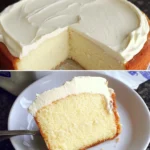
ADVERTISEMENT
Cream Cheese Cake
- Total Time: 1 hour
- Yield: 12 servings 1x
- Diet: Vegetarian
Description
A moist and flavorful cream cheese cake that combines the richness of cream cheese with a tender, fluffy crumb. Perfect for any occasion, this cake is topped with a creamy, tangy frosting that complements the sweetness of the cake, making it an irresistible dessert.
Ingredients
For the Cake:
- 8 oz cream cheese, softened
- ½ cup vegetable oil
- 1 cup granulated sugar
- 3 large eggs
- 1 teaspoon vanilla extract
- 2 cups all-purpose flour
- 1 tablespoon baking powder
- ½ teaspoon salt
- ½ cup buttermilk
For the Frosting:
- 8 oz cream cheese, softened
- ½ cup unsalted butter, softened
- 2 cups powdered sugar
- ¼ teaspoon salt
Instructions
- Preheat Oven: Preheat your oven to 325°F (165°C) and grease a 9x13-inch baking dish.
- Prepare Batter:
- Beat the softened cream cheese until smooth.
- Mix in vegetable oil and granulated sugar until well combined.
- Add eggs one at a time, followed by vanilla extract.
- In a separate bowl, sift together flour, baking powder, and salt.
- Gradually mix the dry ingredients into the wet mixture.
- Fold in buttermilk until the batter is smooth.
- Bake:
- Pour the batter into the greased dish and bake for 35-40 minutes, or until a toothpick comes out clean.
- Cool the cake on a wire rack.
- Prepare Frosting:
- Beat cream cheese and butter until smooth.
- Gradually add powdered sugar and salt, mixing until fluffy.
- Frost the Cake: Once the cake is completely cooled, spread the frosting evenly over the top.
- Serve: Chill before serving for the best texture.
Notes
- For a richer flavor, add a tablespoon of vanilla bean paste.
- Lemon or chocolate variations can be made by adding lemon zest/juice or cocoa powder.
- Store the cake in the refrigerator for up to 5 days or freeze for up to 3 months.
- Prep Time: 20 minutes
- Cook Time: 40 minutes
- Category: Dessert
- Method: Baking
- Cuisine: American

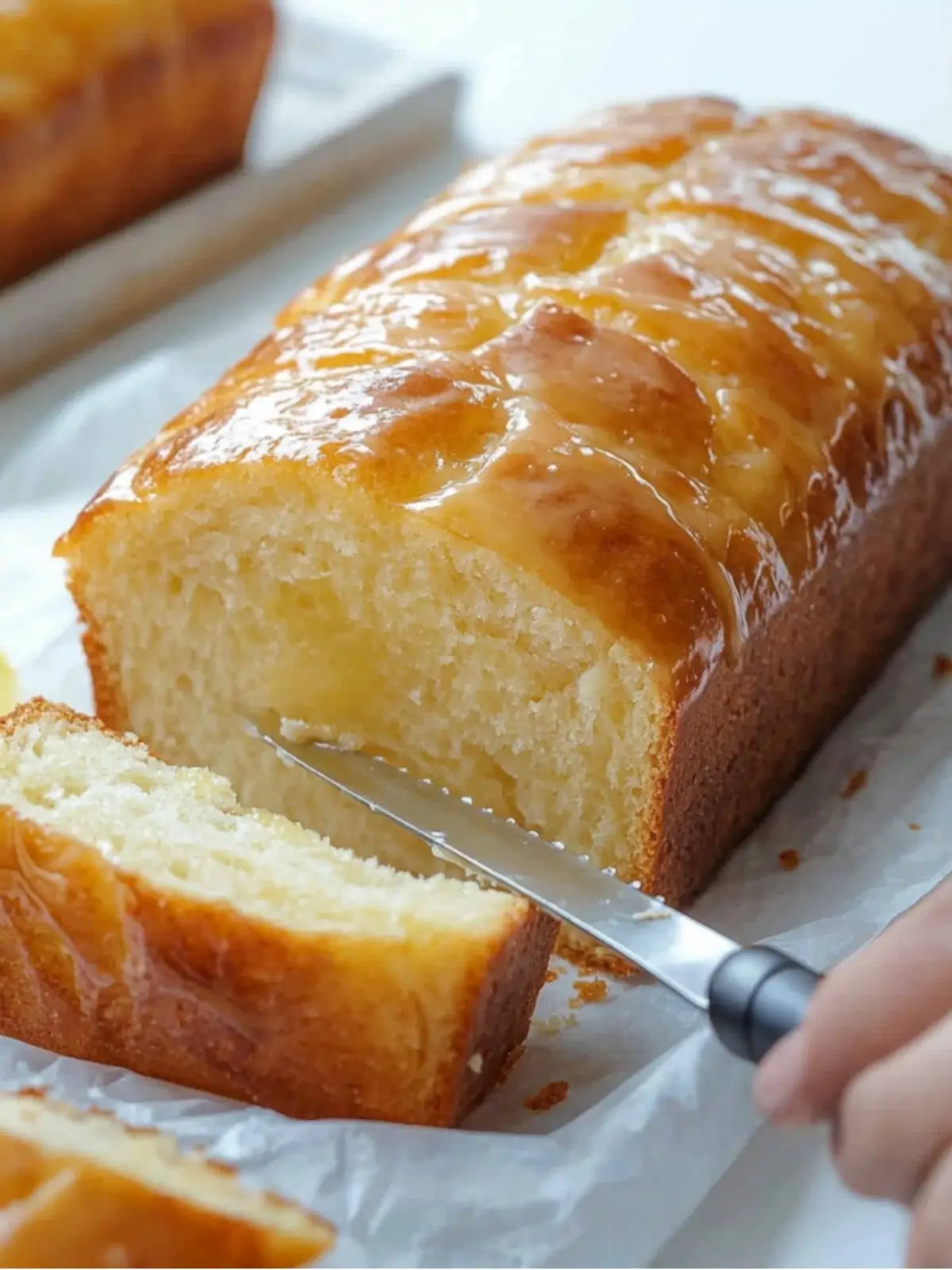
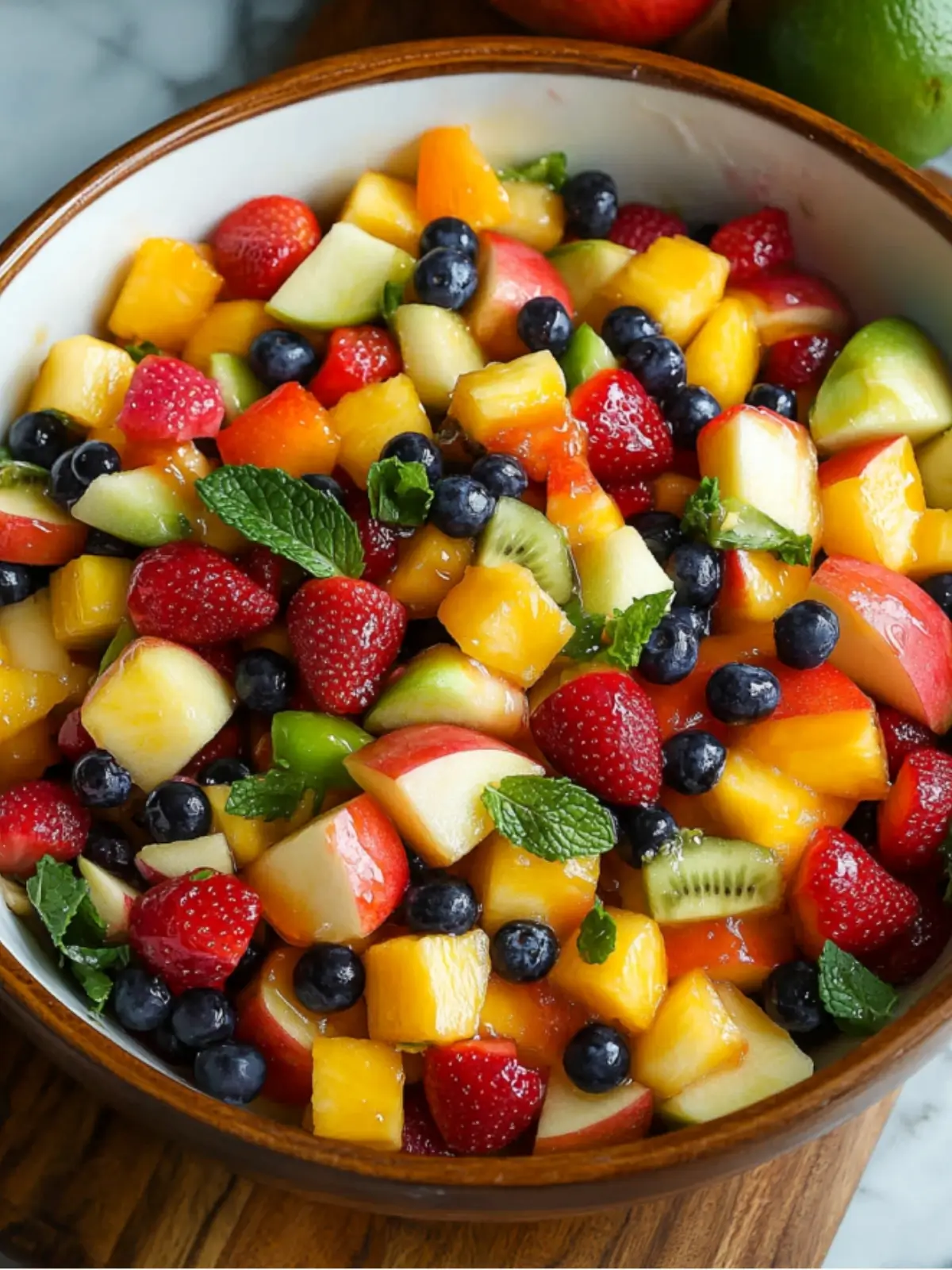
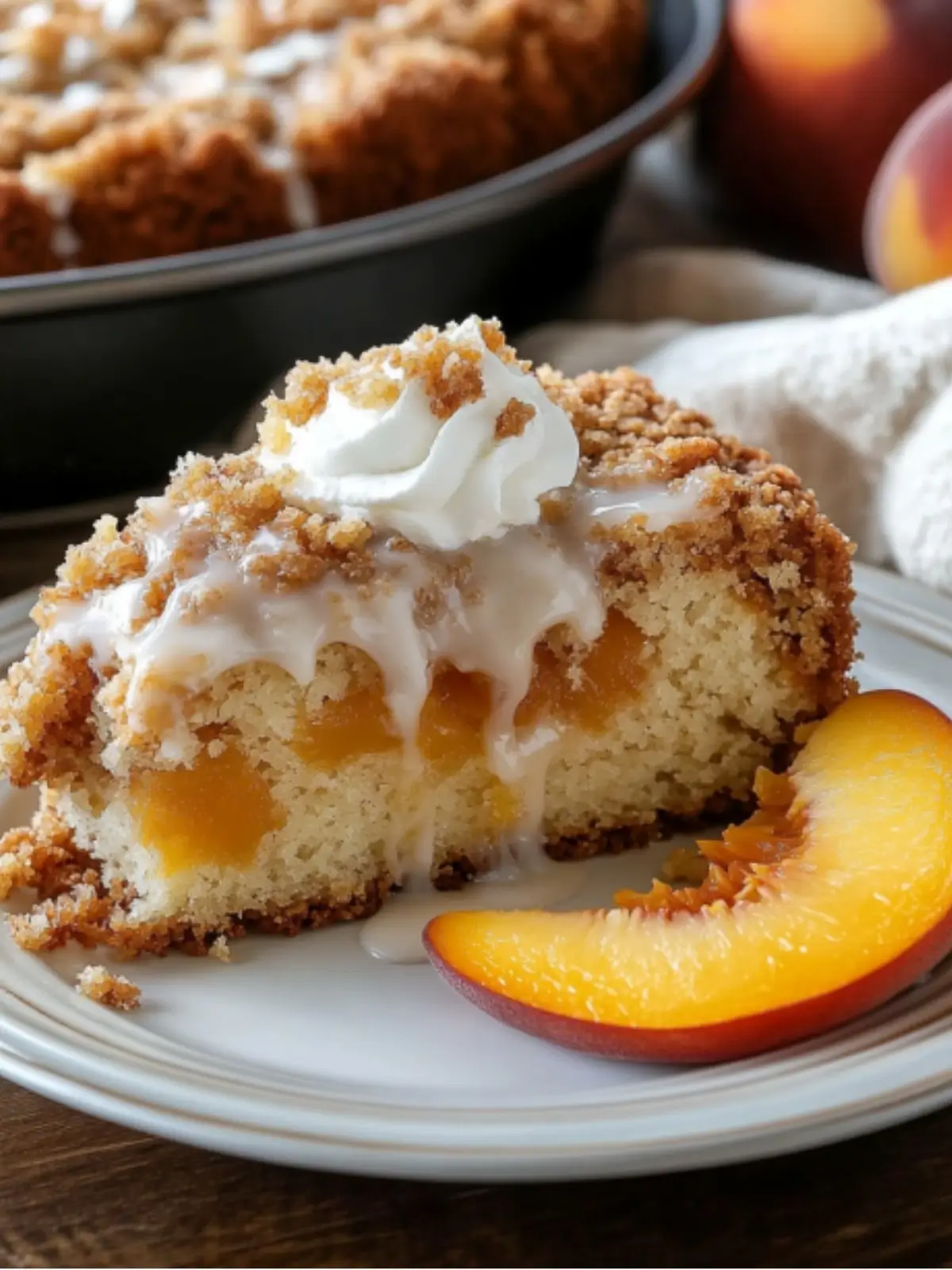
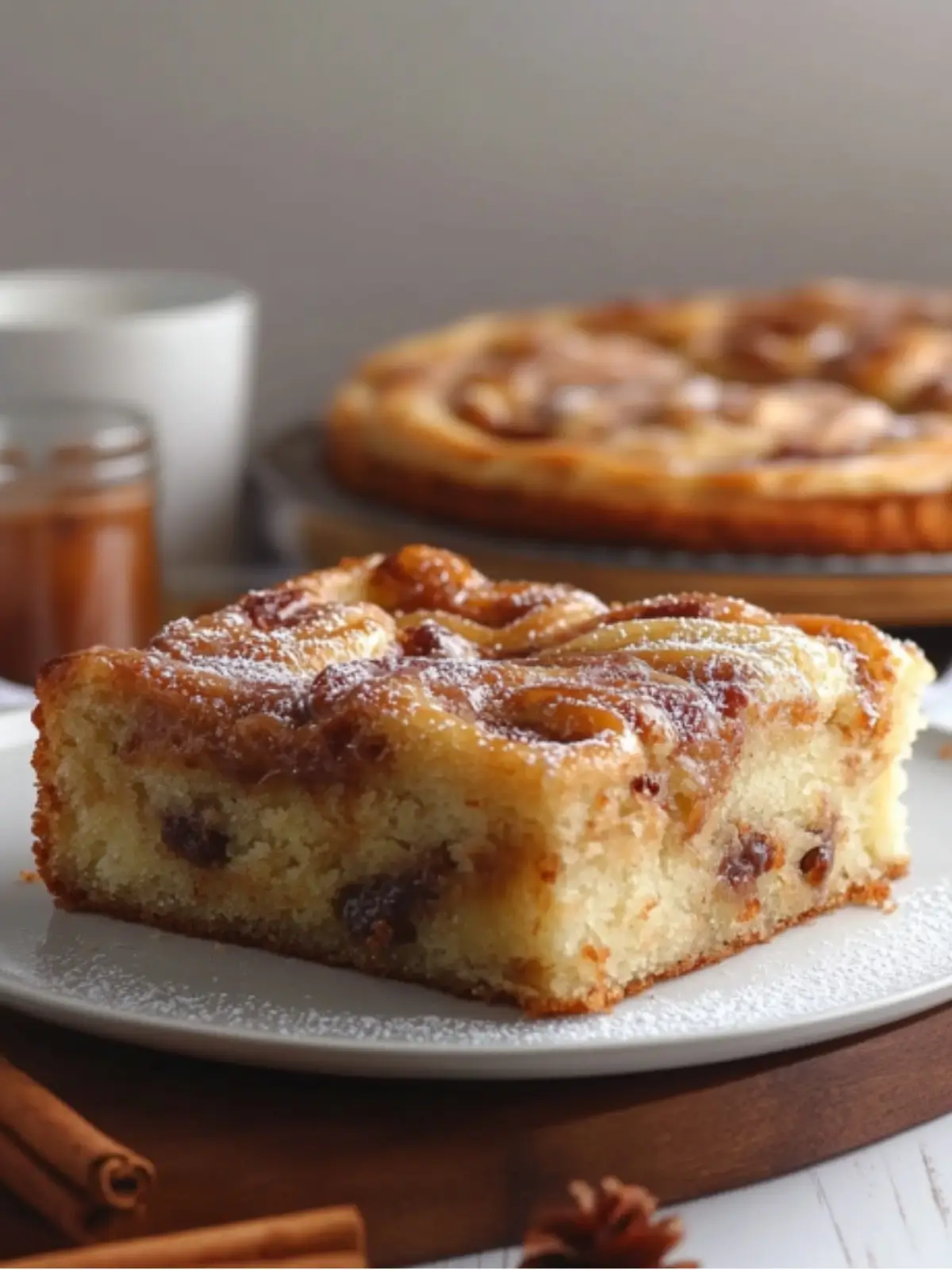
Leave a Reply